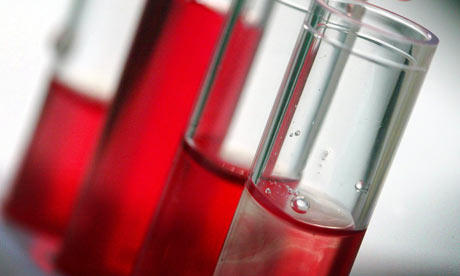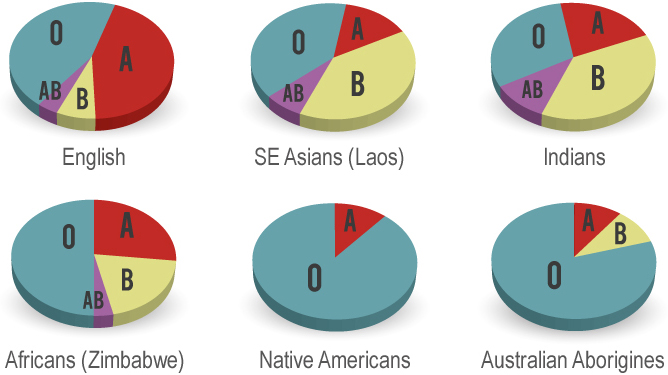 Even though blood in all human beings is composed of the same basic constituents, the blood of two human beings may be not the same. You might be surprised to know that blood has eight different types. These types of blood are characterized by the existence or omission of certain materials that are responsible for generating an immune response if any foreign substance enters into the body. Among the US population, the percentage of people having a specific blood type is as follows:
Even though blood in all human beings is composed of the same basic constituents, the blood of two human beings may be not the same. You might be surprised to know that blood has eight different types. These types of blood are characterized by the existence or omission of certain materials that are responsible for generating an immune response if any foreign substance enters into the body. Among the US population, the percentage of people having a specific blood type is as follows:
- O-positive: 38 percent
- O-negative: 7 percent
- A-positive: 34 percent
- A-negative: 6 percent
- B-positive: 9 percent
- B-negative: 2 percent
- AB-positive: 3 percent
- AB-negative: 1 percent
If you are eager to learn more about blood and why it is so important to our bodies, read on this article.
What Is Blood?
Blood consists of cells and a watery liquid called plasma with the cells floating in it. It has clotting agents present in it as well. Blood is a fluid present in the body that is responsible for supplying vital nutrients and materials like oxygen, hormones and sugar to all of the cells present in the body. It also extracts the waste products from the cells which are finally thrown out of the body in the form of sweat, urine and carbon dioxide from the lungs and feces.
Plasma
55% of blood present in vertebrates and human beings is composed of plasma. In addition to water, plasma also consists of:
- Proteins
- Carbon dioxide
- Glucose
- Hormones
- Blood cells
Types of Blood Cells
- Red blood cells, also known as erythrocytes or RBCs, are the most plentiful cells in the body that contain all important hemoglobin which is responsible for absorbing oxygen from the lungs and transporting it to the rest of the body. RBCs live for 4 months and old ones are replaced at a constant rate by the new ones.
- White blood cells or leukocytes that protect the body and fight the foreign materials, abnormal cells like cancerous cells and infections that attack our body are an important part of the immune system. Granulocytes and lymphocytes are both WBCs that have the ability to reach tissues that are out of the reach of the bloodstream. One liter of blood contains about 4x1010 WBCs.
- Platelets or thrombocytes help in clotting or coagulating blood. They stop the bleeding by bunching up together and forming a clot. When the platelets get exposed to air, they start breaking down and release a material known as fibrinogen in the body which aids in clotting blood. This is why a scab forms when skins wound.
How Does Our Body Make Blood?
Blood is made with the help of bone marrow, iron, vitamins and other nutrients obtained from food.
Stem cells present in the bone marrow manufactures new blood cells which are constantly entered into the blood stream. Bone marrow is a substance that looks like a jelly and is present in the centre of our bones. Marrow of all bones manufactures blood in children while in adults the marrow of only the pelvis, ribs and spine makes blood.
To increase the production of red blood cells in the body, the kidneys secrete a hormone known as erythropoietin which stimulates the stem cells to generate more RBCs.
What Are the Functions of Blood?
Blood performs a number of tasks in the body like:
- Transporting the oxygen to different parts of the body and helps in the expulsion of carbon dioxide. It also distributes nutrients and hormones throughout the body as well.
- Regulating the temperature of the body and keeps tabs on the acid-alkali balance in the body. The body loses heat by increasing blood flow in veins close to the skin.
- Protecting the body from pathogens and bacteria through WBCs and prevents blood loss by clotting.
What Are the Types of Blood?

There are four main blood groups in human which are either RhD negative or positive:
- Group A—RhD negative or positive
A antigens are present on the blood cells’ surface. Plasma contains anti-B antibodies.
- Group B—RhD negative or positive
B antigens are present on the blood cells’ surface. Plasma contains anti-A antibodies.
- Group AB—RhD negative or positive
A and B antigens are present on the blood cells’ surface. Plasma contains no antibodies.
- Group O—RhD negative or positive
No antigens are present on the blood cells’ surface. Plasma contains both anti-A and Anti-B antibodies.
Almost all blood type patients can be given group O blood. Only group A or O blood can be transfused to people having blood group A. Any blood can be transfused to people having blood group AB + (RhD positive).
Babies who have inherited RhD positive from their fathers and whose moms are RhD negative usually require treatment.
Do You Know?
- Similar to eye color, blood type is also inherited by kids from their parents.
- Some countries have a high number of people belonging to one blood type. For instance, Rh+ blood is found in about 99% Chinese.
- The types of blood differ from species to species in the animal kingdom. Cows have 800 blood types as opposed to cats and dogs that have 11 and 4 blood types respectively.
- Blood types are considered to be indicative of a person’s personality. It is believed that people having type O blood are confident leaders, those with type A are calm and dependable, those having type AB are astute and emotional while those with type B are imaginative and excitable.
- Japanese people are firm believers that blood type has an impact on one’s personality. This is why they ask about a person’s blood type instead of asking about his sign.
- An average adult has about 10 pints of blood in his body.
- Approximately 7 percent of your body weight is made up by blood.
- One cup is the amount of blood that a newborn baby possesses in his body at the time of his birth.